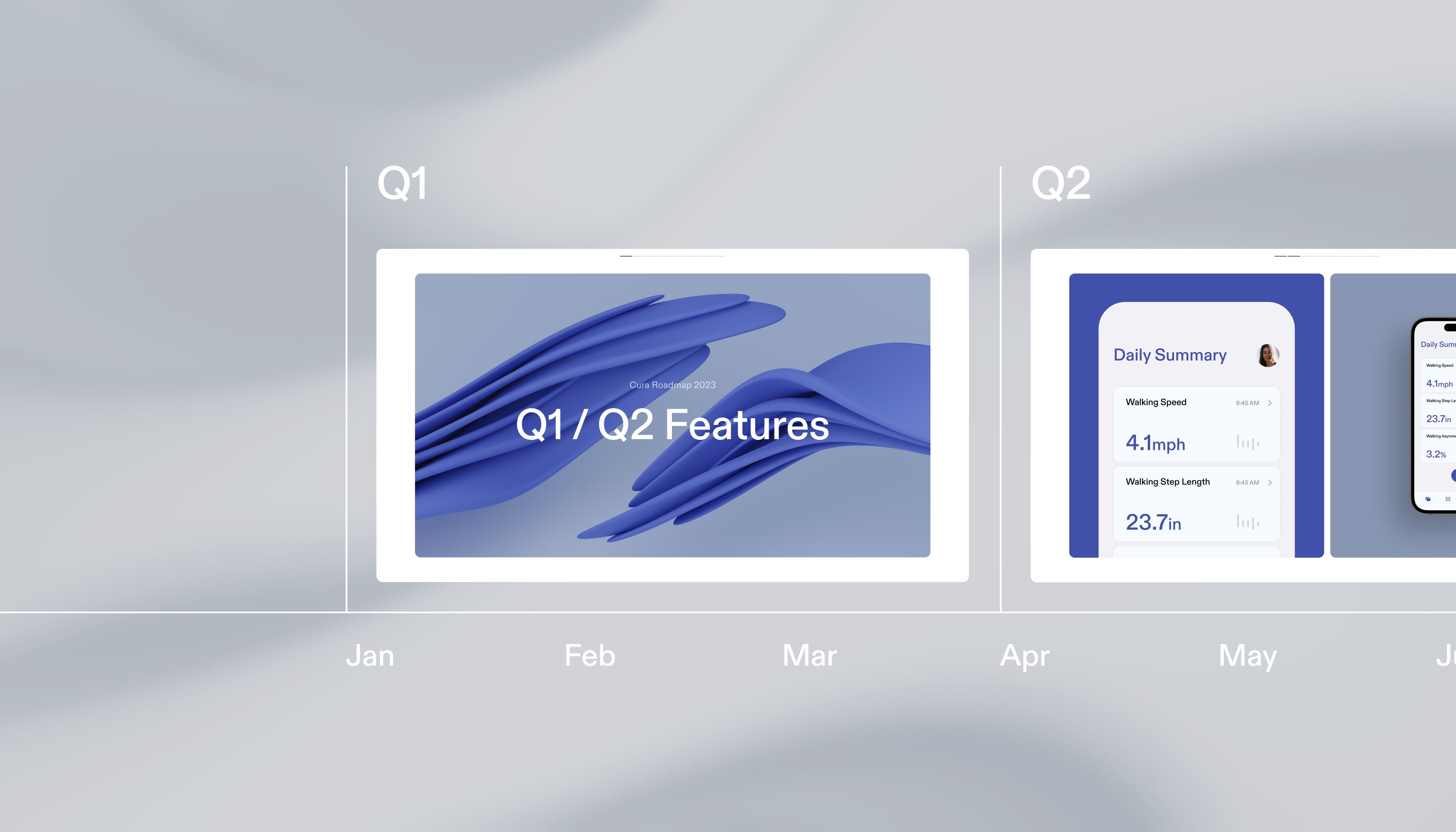Blog

Sales productivity is a critical aspect of any successful business. It's the driving force that transforms hard work into tangible results. But what exactly is sales productivity, and how can you measure it? What are the biggest challenges to achieving it, and how can you overcome them? Most importantly, how can a sales-focused generative AI tool like Tome streamline sales productivity for your whole team? Let’s explore these questions and more. What is Sales Productivity? Sales productivity is the efficiency and effectiveness of your sales team in generating revenue. It’s not just about how hard your team works but about how effectively they use their time and resources to close deals and drive business growth. High sales productivity means your team is maximizing their output (sales) while minimizing the input (time and resources). When your sales team is productive, they’re not just busy—they’re busy doing the right things. It’s about aligning their efforts with your business goals and ensuring every action they take moves the needle forward. How to Measure Sales Productivity Measuring sales productivity involves both quantitative and qualitative factors, and as a sales leader, understanding these metrics can transform your team’s performance. Key metrics to consider include: Revenue per Sales Representative: This measures the total revenue generated divided by the number of sales reps, indicating how much each team member contributes to your bottom line. This metric helps identify top performers and those who might need additional support or training. Conversion Rate: The percentage of leads that turn into customers reflects your team’s effectiveness at closing deals. A high conversion rate means your team is effectively moving prospects through the sales funnel and sealing the deal. Average Deal Size: The average value of the deals your team closes shows the impact of each sale. By understanding this, you can strategize on focusing efforts on higher-value deals or balancing between quantity and quality of sales. Sales Cycle Length: The average time it takes to close a deal indicates the efficiency of your sales process. Shortening this cycle without sacrificing quality can lead to more sales and better use of your team’s time. Activity Metrics: The number of calls made, emails sent, meetings held, and proposals delivered provides insight into your team’s effort levels. However, it’s not just about quantity; the quality of these activities is crucial for productivity. Meetings Booked: The number of meetings your team books with potential clients is a strong indicator of their ability to generate interest and move prospects into deeper stages of the sales funnel. Total Pipeline Created: This measures the total value of opportunities generated by your sales team, showing their effectiveness in building a robust sales pipeline. A strong pipeline is crucial for sustaining long-term revenue growth. Qualified Pipeline Created: The value of opportunities that have met certain criteria to be considered “qualified” is a key indicator of the quality of your team’s efforts. A qualified pipeline is more likely to convert into actual sales, making it a critical focus area. Customer Acquisition Cost (CAC): The total cost of acquiring a new customer, with lower CAC indicating higher efficiency. Balancing this with your Customer Lifetime Value (CLV) helps ensure you’re investing in the right areas. Customer Lifetime Value (CLV): The total revenue you can expect from a customer over their lifetime shows the long-term value of your sales efforts. Increasing CLV means building lasting relationships with customers, leading to sustained revenue. Beyond numbers, it’s essential to understand the story those numbers tell about your team’s efficiency and effectiveness. As a sales leader, you're looking for patterns, trends, and insights that can help you refine your strategies and improve performance. For instance, if you notice a drop in conversion rates, it might be time to revisit your sales pitches or provide additional training on objection handling. Analyzing these metrics regularly can help you know how to best support your team, and improve performance overall. The Biggest Challenges to Sales Productivity Despite their best efforts, sales teams often face significant challenges that can hinder productivity. Let’s dive into these challenges and how they can impact your team’s performance: Data Overload Sales reps are often overwhelmed with data—from CRM entries to market research. Sorting through this information can be time-consuming and distract from actual selling. Imagine your reps spending hours just to find the right piece of information instead of engaging with prospects. Simplifying data management through automation and efficient CRM systems can drastically reduce this burden. Inefficient Processes Outdated or complicated sales processes can slow down your team. If your reps are spending more time on administrative tasks than selling, it’s a red flag. Streamlining these processes, perhaps through automation or revisiting your sales workflow, can free up valuable time. Think about implementing tools that automate follow-ups or proposal generation to keep your reps focused on selling. Poor Lead Quality Not all leads are created equal. Chasing low-quality leads can waste time and resources, reducing overall productivity. As a sales leader, it’s crucial to invest in a lead scoring system that prioritizes high-quality leads. This ensures your team spends their time on prospects that are more likely to convert, improving overall productivity. Lack of Training Without proper training, even the most talented sales reps can struggle. Continuous learning and development are crucial for maintaining high sales productivity. Regular training sessions, workshops, and access to learning resources can help keep your team’s skills sharp and updated. Encouraging a culture of continuous improvement can lead to better performance and higher morale. Inadequate Tools Using outdated or inadequate tools can severely limit your team’s ability to perform. The right technology can make a huge difference in productivity. For example, investing in AI-driven tools like Tome can provide your team with real-time insights and streamline their workflow. These tools can handle repetitive tasks, allowing your reps to focus on what they do best—selling. Low Morale A disengaged or unhappy sales team will not perform at their best. Morale plays a crucial role in sales productivity. As a leader, fostering a positive and motivating work environment is essential. Recognize achievements, provide constructive feedback, and create opportunities for growth and advancement. Happy and motivated employees are more productive and contribute positively to the team’s success. It’s evident that measuring sales productivity and overcoming challenges go hand-in-hand. Understanding where your team stands through precise metrics helps you identify the challenges more clearly. Once identified, addressing these challenges with targeted strategies can lead to significant improvements in productivity. As a sales leader, this holistic approach ensures that your team is not only working hard but also working smart, driving better results and sustained growth. How to Overcome Productivity Challenges Addressing sales productivity challenges requires a strategic approach that prioritizes improving processes and leveraging better tools. These two areas can significantly impact various other challenges your sales team might face. Start by streamlining your sales processes. Conduct a thorough audit to identify bottlenecks and eliminate unnecessary steps that slow your team down. Simplifying workflows can free up valuable time for your sales reps to focus on selling. Automate repetitive tasks such as data entry, follow-up emails, and scheduling meetings. This not only saves time but also reduces the likelihood of human error. When your sales team is not bogged down by administrative tasks, they can dedicate more time to building relationships with prospects and closing deals. The right tools can make a world of difference in enhancing sales productivity. A robust CRM system is the backbone of your sales operations. It centralizes all your data, making it easily accessible and manageable. Ensure that your CRM is user-friendly and integrates seamlessly with other tools your team uses. Regularly updating and cleaning your data within the CRM keeps it relevant and useful for making informed decisions. AI-powered tools can significantly boost productivity by providing real-time insights and automating various aspects of the sales process. These tools help with everything from identifying high-quality leads to personalizing customer interactions. By leveraging advanced analytics, your team can gain valuable insights into sales patterns and trends, allowing them to make data-driven decisions that enhance their effectiveness. While streamlining processes and leveraging better tools are crucial, it’s also important to maintain some focus on continuous training and development. Regular training sessions can keep your team’s skills sharp and updated. Additionally, fostering a positive and supportive work environment is essential for maintaining high morale and productivity. Recognize achievements, provide constructive feedback, and create opportunities for growth and advancement. By focusing on these strategies, you can address multiple challenges to sales productivity simultaneously. As a sales leader, these targeted actions will help you build a more productive and successful sales team. Leverage Generative AI for Sales Productivity Generative AI tools are revolutionizing the sales landscape, and Tome is at the forefront of this change. Tome goes beyond task automation, and acts as a sales-specific research tool that understands your unique sales methodology and value proposition. Tome helps AEs with targeted prospecting, in-depth account research, and meeting preparation by bringing all relevant data into a single, easy-to-use chat interface. Additionally, Tome’s AI technology combines both individual and company-level intent signals to show exactly who to contact, why they’re important, and what to say to make an impact. By aligning with your sales strategy, Tome takes your account research process from hours down to minutes. Plus, Tome equips AEs with the precise information they need to connect with prospects more effectively, leading to a more qualified pipeline and bigger wins. Get Started with Tome Sales productivity is a complex but crucial aspect of business success. By understanding what it is, how to measure it, and the challenges that can hinder it, you can take strategic steps to enhance your team’s performance. Leveraging a sales-focused generative AI tool like Tome can significantly streamline sales productivity, providing automation, insights, and seamless integration with your CRM. With the right approach and tools, you can turn your sales team into a powerhouse of productivity, driving growth and achieving your business goals. Get started with a Tome demo today.

In the dynamic world of B2B sales, generating quality leads is crucial for business growth and sustainability. The ability to attract and convert potential clients into loyal customers can significantly impact a company's revenue and market presence. This is where advanced tools like Tome come into play. Tome, an AI-driven sales tool, is revolutionizing how businesses approach lead generation, making the process more efficient and effective. In this article, we'll delve into the importance of B2B lead generation, explore strategies to enhance lead volume, and see how Tome can be integrated into your sales strategy to yield impressive results. Why B2B Lead Generation is Important B2B lead generation is the lifeblood of any thriving business. It is the process of identifying and attracting potential customers who have a genuine interest in your product or service. For sales leaders, this process is crucial not just for driving revenue but also for ensuring a steady stream of business opportunities. Without a consistent influx of leads, a company risks stagnation and potential decline in its competitive edge. Understanding MQLs and SQLs Marketing Qualified Leads (MQLs) and Sales Qualified Leads (SQLs) are critical concepts in lead generation. MQLs are leads that have shown interest in your marketing efforts, such as downloading a whitepaper or attending a webinar. They are considered more likely to become customers compared to other leads. SQLs, on the other hand, are leads that have been vetted by the sales team and are deemed ready for direct sales engagement. For sales leaders, understanding the distinction between MQLs and SQLs is crucial for tailoring the right approach at each stage of the buyer’s journey. MQLs are nurtured through targeted marketing efforts until they exhibit behaviors that qualify them as SQLs. This transition from MQL to SQL is a critical step as it marks the lead’s readiness for a sales pitch. Lead scoring, nurturing, and qualification are integral to this process. By assigning values to leads based on their engagement levels and behaviors, and providing relevant content to build interest and trust, sales leaders can ensure that only the most promising leads are passed to the sales team. Steps to Improve Lead Generation Volume Improving lead generation volume is a strategic process that requires a multi-faceted approach. Here are the essential steps for sales leaders to enhance their lead generation efforts: Identify Your Target Audience Understand who your ideal customers are and what they need. Use demographic data, customer personas, and market research to pinpoint your audience. Focus your marketing efforts on attracting the right prospects. Leverage Content Marketing Create valuable and relevant content that addresses your audience’s pain points and interests. Develop blog posts, whitepapers, case studies, and videos. Position your company as an industry authority with high-quality content. Optimize for SEO Ensure your website and content are optimized for relevant keywords. Improve website loading times and user experience. Increase your visibility on search engines to attract organic traffic. Engage on Social Media Share your content and participate in industry discussions. Use targeted ads to reach a broader audience. Directly interact with prospects to build relationships and trust. Implement Email Marketing Build a quality email list and send personalized, relevant content to subscribers. Use automation to nurture leads through drip campaigns. Track engagement and refine your approach to ensure timely and relevant messaging. Leveraging AI in B2B Lead Generation Artificial Intelligence (AI) offers numerous benefits for B2B lead generation. For sales leaders, AI can analyze vast amounts of data quickly, identify patterns, and predict behaviors. This allows businesses to make informed decisions and tailor their marketing efforts more precisely. AI-driven tools can automate repetitive tasks, freeing up time for your sales team to focus on high-value activities. There are several AI tools available that can enhance your lead generation efforts. These tools can automate tasks, provide insights, and streamline processes. Examples include AI-driven chatbots, predictive analytics platforms, and customer relationship management (CRM) systems. These tools can help you identify high-quality leads, predict their behaviors, and automate follow-up actions, increasing the efficiency of your lead generation efforts. Tome stands out as an AI-driven sales tool designed to optimize lead generation and management. Tome uses advanced algorithms to identify high-quality leads, predict their behaviors, and automate follow-up actions. This not only saves time but also increases the efficiency of your lead generation efforts. By integrating Tome into your lead generation strategy, you can leverage its advanced features to enhance your lead generation process. Integrating Tome into Your Lead Generation Strategy With Tome, your lead generation strategy becomes smarter and more targeted thanks to advanced AI technology. By leveraging cutting-edge algorithms, Tome is able to prioritize leads based on fit and intent with remarkable accuracy. This ensures that your team spends their valuable time and resources on the prospects most likely to convert, ultimately improving your overall conversion rates. The AI technology behind Tome also goes beyond lead prioritization, guiding your outreach efforts with personalized messaging suggestions that align perfectly with each prospect’s unique needs and challenges. Through sophisticated analysis of customer data and behavior, the AI capabilities of Tome provide invaluable insights into the most effective outreach strategies, helping your team to craft compelling and relevant messages that marry your value prop to the initiatives your buyers care about. By integrating Tome, you're not just enhancing your research and lead generation processes; you're empowering your team with a powerful assistant that makes every step of the process more strategic and impactful, thanks to the advanced AI technology at its core. Measuring Lead Generation Success Measuring the success of your lead generation efforts is essential for continuous improvement. Key metrics to track include lead conversion rate, cost per lead, lead quality score, customer acquisition cost, and return on investment (ROI). By tracking these metrics, sales leaders can gain insights into the effectiveness of their lead generation strategies and identify areas for improvement. Use tools like Google Analytics, CRM systems, and AI-driven analytics platforms to track and analyze your lead generation metrics. Regularly review your data to identify trends, areas for improvement, and successful strategies. Lead generation is an ongoing process that requires continuous refinement. Use the insights gained from your metrics to make data-driven decisions and adjust your strategies. Experiment with new approaches, learn from your successes and failures, and stay updated with industry trends. Try Tome Today In the ever-evolving landscape of B2B sales, effective lead generation is paramount for business success. By understanding the importance of lead generation, leveraging AI tools like Tome, and continuously optimizing your strategies, you can unlock the full potential of your sales efforts. Tome’s advanced features and capabilities make it an invaluable asset for any business looking to enhance their lead generation process. Embrace the power of AI, and watch your business grow.

Dissecting the key elements of a compelling prompt structure in Tome is the first step to making polished, professional work using AI.

Show potential clients and partners who you are and what you can do in Tome.

Learn how to craft a marketing brief—a document that provides an overview of the various components within a marketing campaign.

An environmentalist and content creator discusses how Tome helps her spread the word on sustainability and more.

Share your concept and win clients with a presentation that expresses your vision.

A media kit is a must-have for any brand, organization, and creator. Follow these four essential steps to create a media kit that can help win you partnerships and press.

Leading sales teams are using AI to supercharge their CRMs, prospect more efficiently, and create sales enablement materials.

A visual effects COO shares how his team earned back time and operating costs with Tome.

Maximino Perez, founder of Mighty One Music, shares how he creates compelling AI presentations in Tome, and makes it a family affair.

Supercharge creativity, improve efficiency, and cut manual tasks with these 10 game-changing AI tools.

Learn the basics of B2B content marketing, including essential formats and the five key steps to success.

Learn how to craft an RFP response that will catch the requester’s attention and win their business.

All the tips, templates and AI thought-starters that founders and entrepreneurs need to grow their business with Tome.

Learn the seven steps to creating a product roadmap that communicates your vision and secures alignment.

Your portfolio should communicate your unique point of view as an interior designer through past work and insights into your process.

Hear from a musician, producer and composer on how he uses Tome's flexible format to create visual soundscapes.